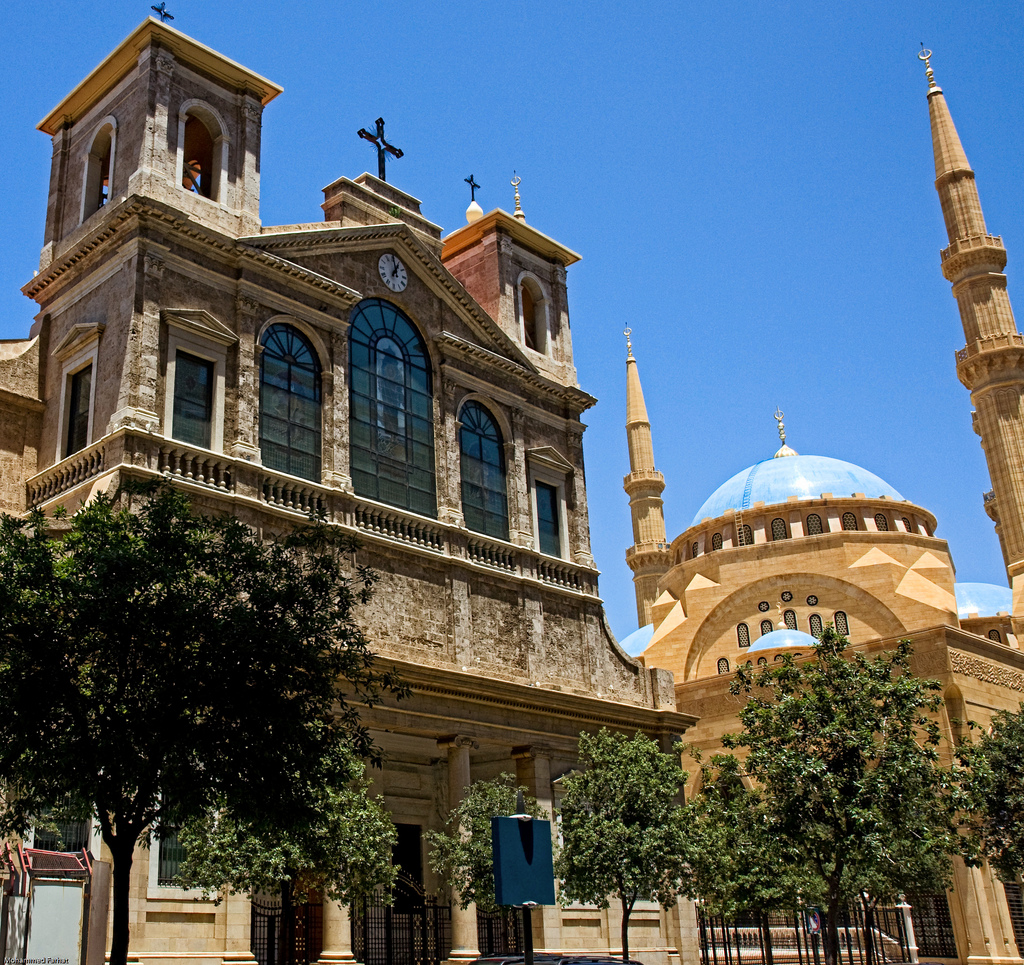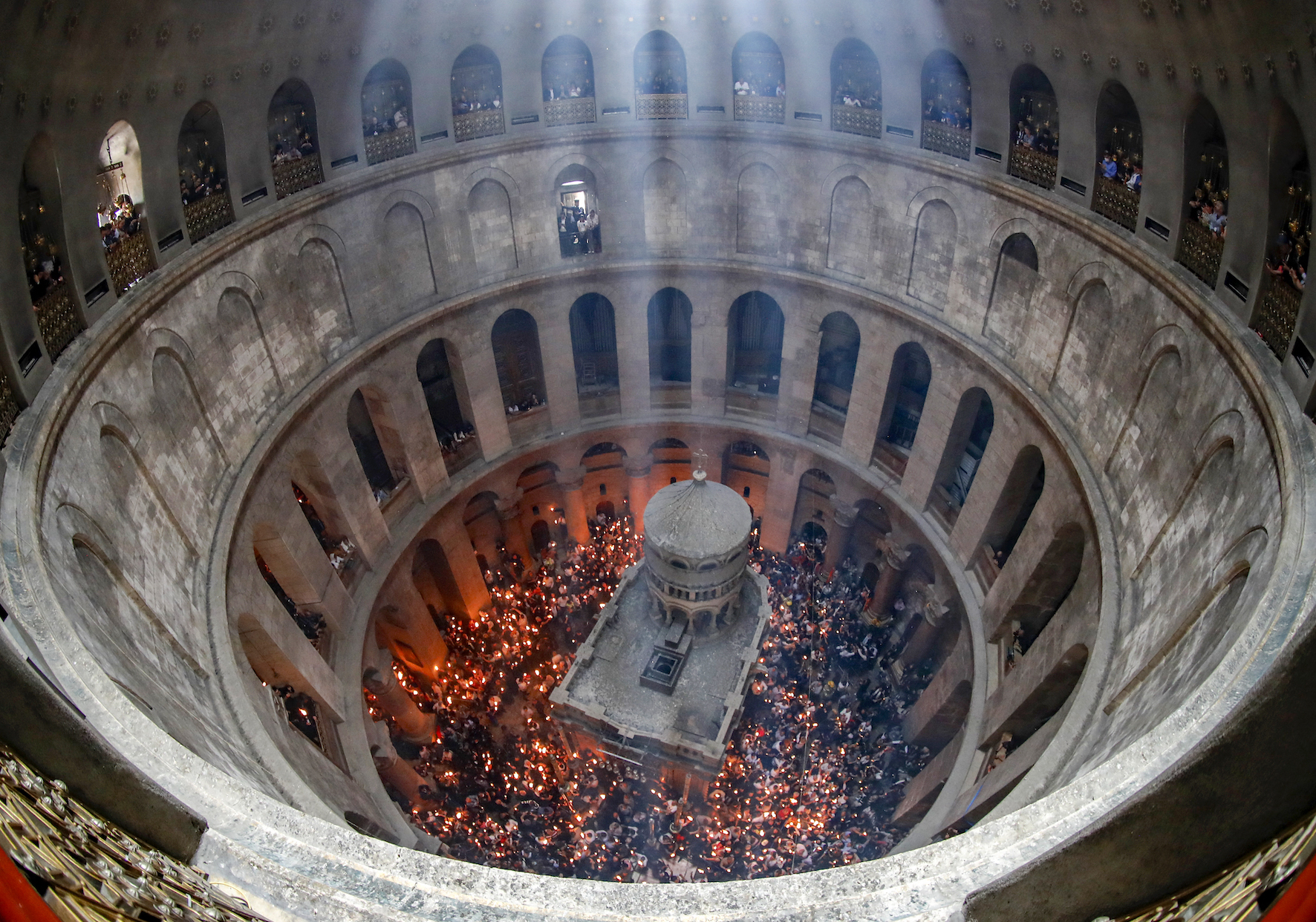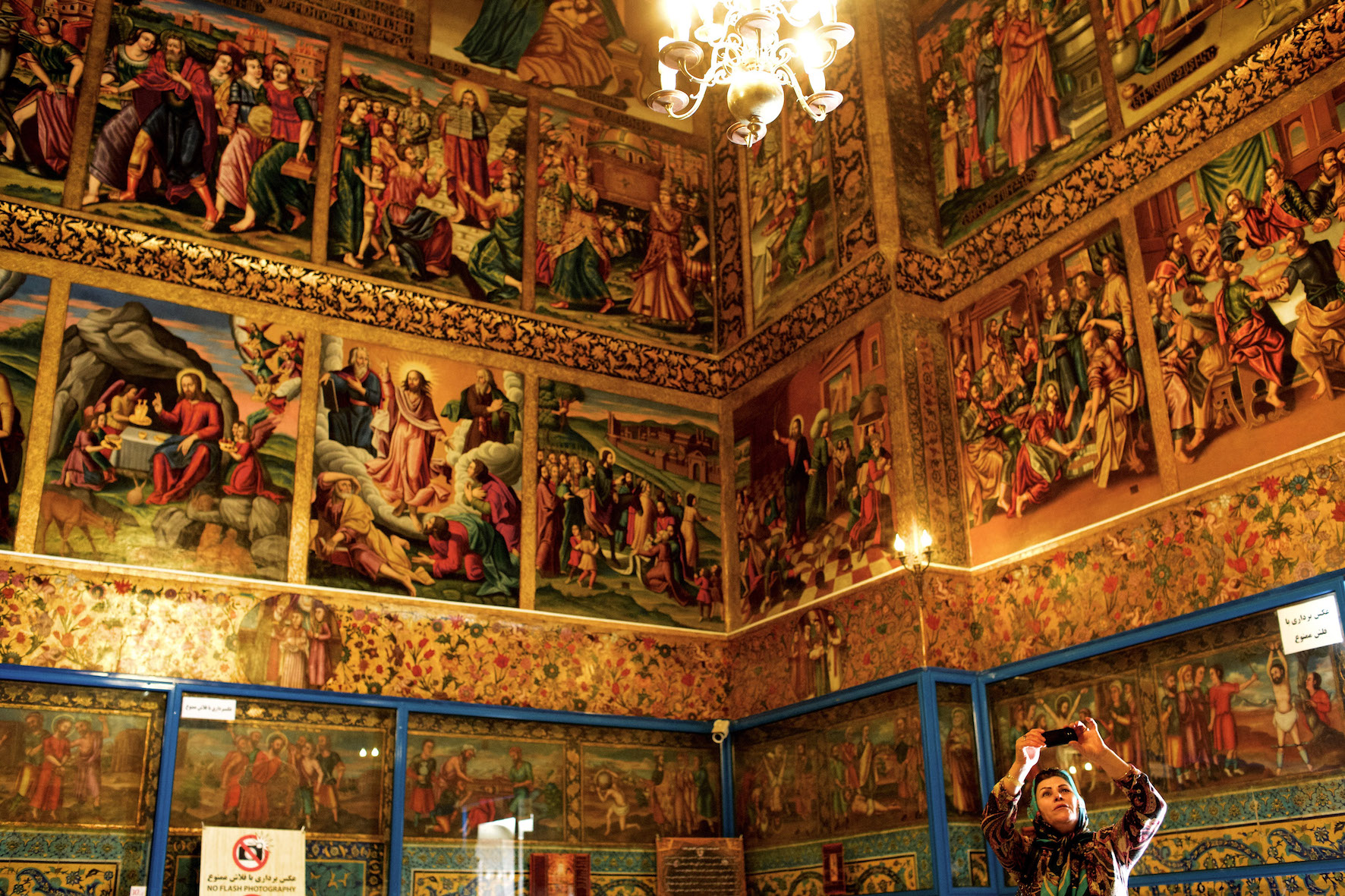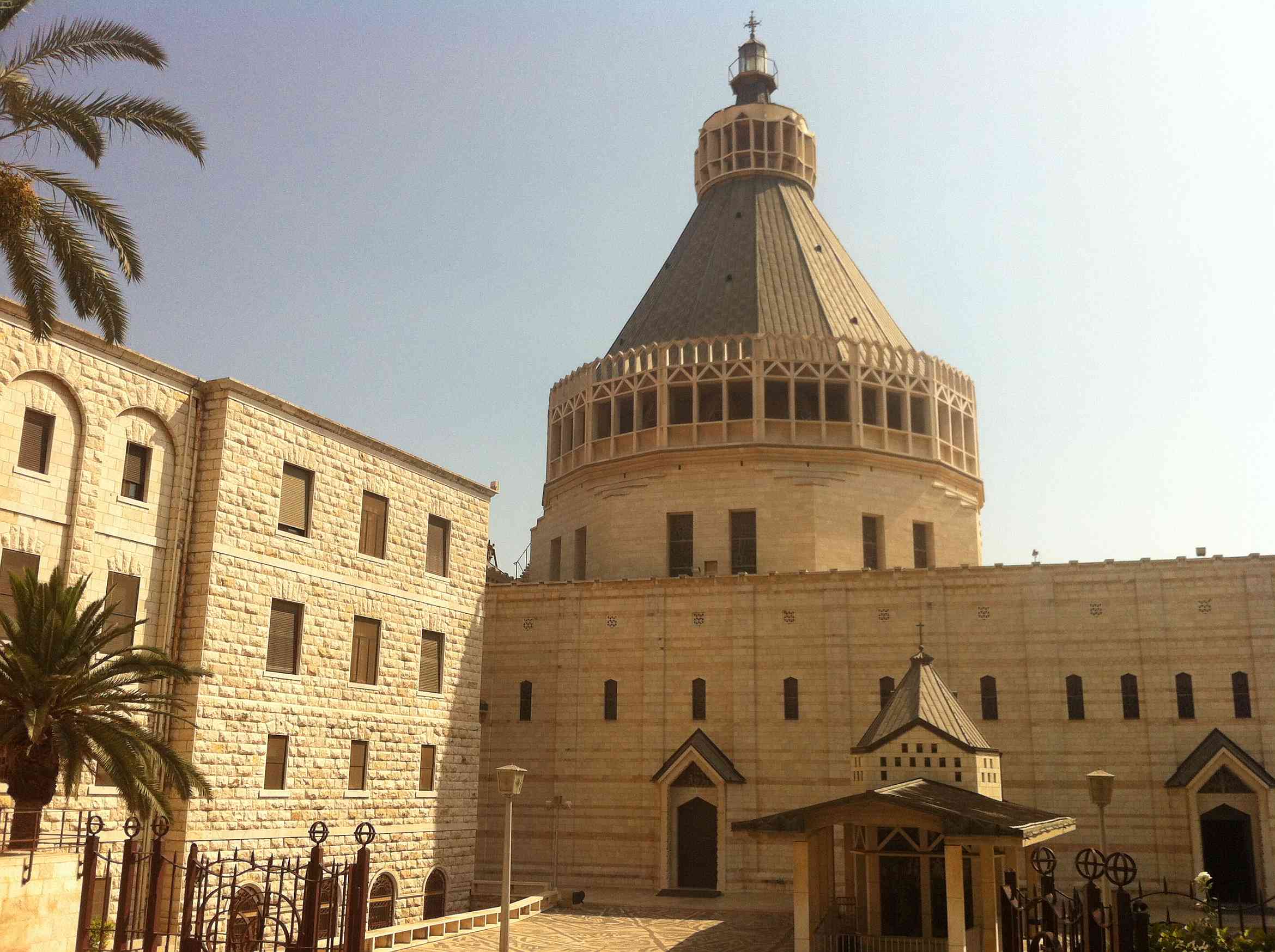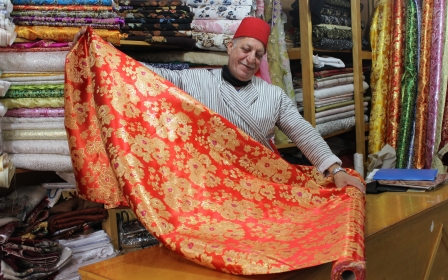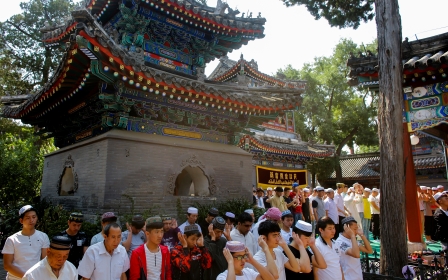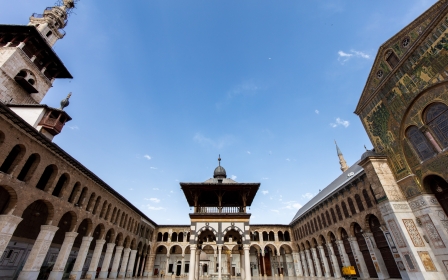Five important Christian churches in the Middle East you should know about

The Middle East is the birthplace of the three major Abrahamic religions and is still home to large Christian communities.
Overall, Christians make up around 10 to 15 percent of the Arab world and wider Middle East, with the largest community in Egypt, followed by Iraq, Syria and Lebanon, as well as Palestine. Non-Arab states, such as Iran and Turkey, are also home to considerable Christian minorities.
Given the Muslim majority of the region, considerable attention is paid to its mosques but as any one who has visited the countries above can attest, there is no shortage of impressive and historic churches and monasteries.
Here, we take a look at some notable churches in the Middle East:
1. Monastery of Saint Simon, Cairo
The modest front entrance of the monastery in Cairo's Mokattam neighbourhood gives way to an elaborate structure built into pre-existing caves that can accomodate 20,000 worshippers.
Many of the church's congregation belong to the "Zabbaleen" community, which literally means "garbage people", a name they acquired because of their traditional job of collecting and recycling rubbish from around the Egyptian capital.
The structure that stands today was built in honour of the 10th century Christian, Saint Simon the Tanner, who in local legend is reported to have moved the mountain of Mokattam to its current position.
According to the account, Saint Simon performed the miracle after being challenged to do so in a debate with a Jewish rival and the Fatimid caliph, resulting in the conversion of the latter to Christianity.
The Egyptian Coptic Church commemorates the miracle with a three-day fast.
Carved into the cave walls and mountain rocks are paintings and illustrations from the Bible. These are accompanied by rock sculptures of the Virgin Mary and Mary Magdalene.
Despite being hard to reach, the monastery is visited by hundreds of thousands of people each year and is particularly busy during Easter.
2. Maronite Cathedral of Saint George, Beirut
While Lebanon’s Maronite Cathedral of Saint George boasts stunning architecture and an elaborate design, the building itself has a troubled history.
When Lebanon’s civil war broke out at the end of the 20th century, the house of worship was heavily shelled. Some took advantage of the chaos, and the site was plundered and defaced with its works of art looted.
Inspired by Rome’s Basilica of Santa Maria Maggiore, construction on the cathedral started in 1884 and ended 10 years later in 1894.
Efforts to restore the building took place at the turn of the 21st century. Some of the art that was stolen has since been recovered, including a painting by Eugene Delacroix representing Saint George, the cathedral's patron saint.
The cathedral was again damaged in August 2020 by the Beirut port explosion, which claimed around 200 lives and destroyed large parts of the city.
At the cathedral, the blast destroyed priceless features including the stained glass art.
3. Church of the Holy Sepulchre, Occupied East Jerusalem
Located in the Christian quarter of Jerusalem’s old city, the Church of the Holy Sepulchre is considered to be one of the holiest places of worship in the Christian faith.
According to tradition, the church contains the site where Jesus was crucified and the empty tomb where Jesus was interred and subsequently resurrected.
The site has been a major Christian pilgrimage destination since it was built in the fourth century and has more than 30 chapels and worship spaces.
Easter is an especially important time for the church. Every year, the faithful will gather to witness and take part in the Holy Fire ceremony, during which they see the flame which they believe appeared at the tomb of Jesus.
At the ceremony, it is customary for Christians to make prayers and light candles at the site of Jesus’ tomb.
Outside the church, a parade typically takes place accompanied by the banging of drums and worshippers carrying crucifixes.
4. Vank cathedral, Isfahan
The exterior of Vank Cathedral in the Iranian city of Isfahan is deceptively plain when compared to its stunning interior, which boasts frescos, carvings and tiles that line the walls from floor to ceiling.
It’s no wonder that this cathedral is one of the most popular tourist attractions in the city of Isfahan, a city with no shortage of architectural marvels.
Established in 1606, the cathedral was built by Iran's Armenian community, who were forcibly resettled to Iran by Safavid ruler Shah Abbas I.
In Armenian, Vank means “monastery” or “convent”, but the cathedral is also known as the Holy Saviour Cathedral or the Church of the Saintly Sister.
The central dome of the cathedral is painted in blue and gold, depicting the biblical story of the creation of the world and Adam and Eve’s expulsion from the garden of Eden.
Elsewhere is a ceiling covered in Persian floral ornaments and Armenian national motifs.
Other than the cathedral itself, the site includes a courtyard with a bell tower, several graves of orthodox and protestant Christians, a library, a museum and a memorial to the Armenian genocide.
5. The Church of Annunciation, Nazareth
The Church of Annunciation is located in Nazareth in modern-day Israel and is sometimes referred to as the Basilica of the Annunciation.
For Catholics, the church is believed to be the location of the Virgin Mary's house and where she learnt that she would give birth to Jesus.
According to religious texts, the archangel Gabriel appeared to Mary and told her, in an event known as the Annunciation, that despite her virginity, she would bear a child.
The current church was completed in 1969 and has two floors with the ground level containing the Grotto of Annunciation, believed to be the remnants of the Virgin Mary’s home.
The church was built according to the architectural style known as “Italian brutalist”, which uses exposed, unfinished concrete to highlight natural elements.
Visitors can find a number of mosaics within the church, including several of the Virgin Mary.
This article is available in French on Middle East Eye French edition.
Middle East Eye propose une couverture et une analyse indépendantes et incomparables du Moyen-Orient, de l’Afrique du Nord et d’autres régions du monde. Pour en savoir plus sur la reprise de ce contenu et les frais qui s’appliquent, veuillez remplir ce formulaire [en anglais]. Pour en savoir plus sur MEE, cliquez ici [en anglais].




